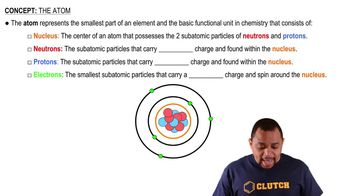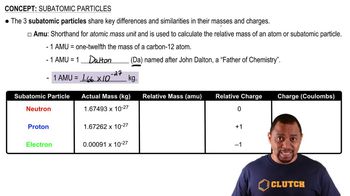Here are the essential concepts you must grasp in order to answer the question correctly.
Atomic Structure
Atomic structure refers to the composition of an atom, which includes protons, neutrons, and electrons. Protons are positively charged particles found in the nucleus of an atom, and they play a crucial role in defining the atomic number and identity of an element.
Recommended video:
Subatomic Particles
Subatomic particles are the smaller constituents of an atom, primarily protons, neutrons, and electrons. Each of these particles has distinct properties; for instance, protons have a positive charge, neutrons are neutral, and electrons carry a negative charge, influencing the atom's overall charge and behavior.
Recommended video:
Chemical Symbols
Chemical symbols are one- or two-letter notations used to represent elements in the periodic table. The symbol for a proton is 'p' or 'p+', indicating its positive charge, and understanding these symbols is essential for communicating chemical information succinctly.
Recommended video:
 Verified step by step guidance
Verified step by step guidance

